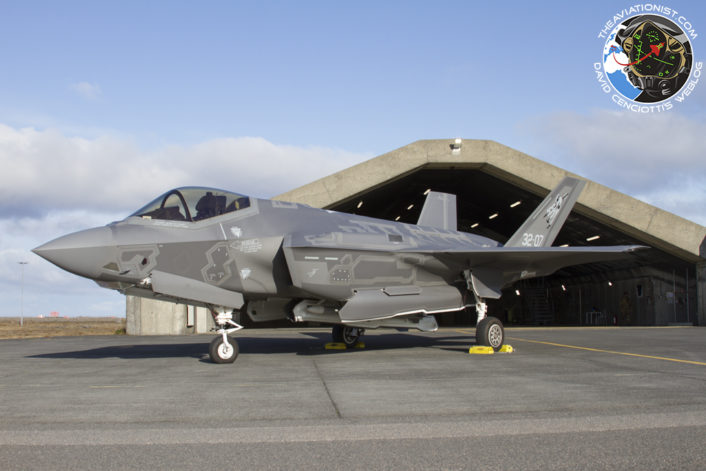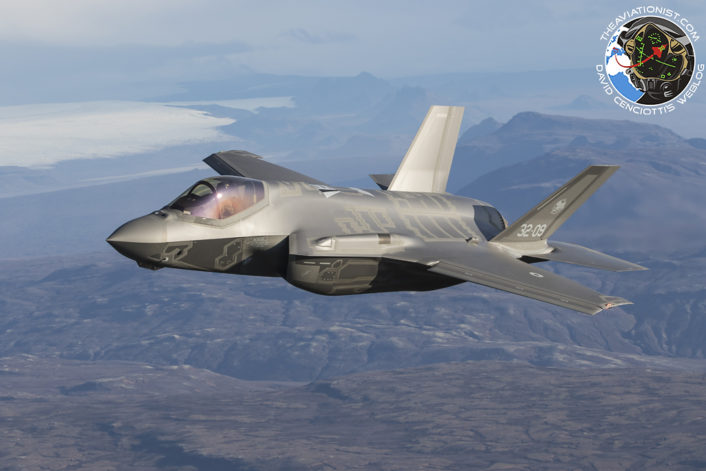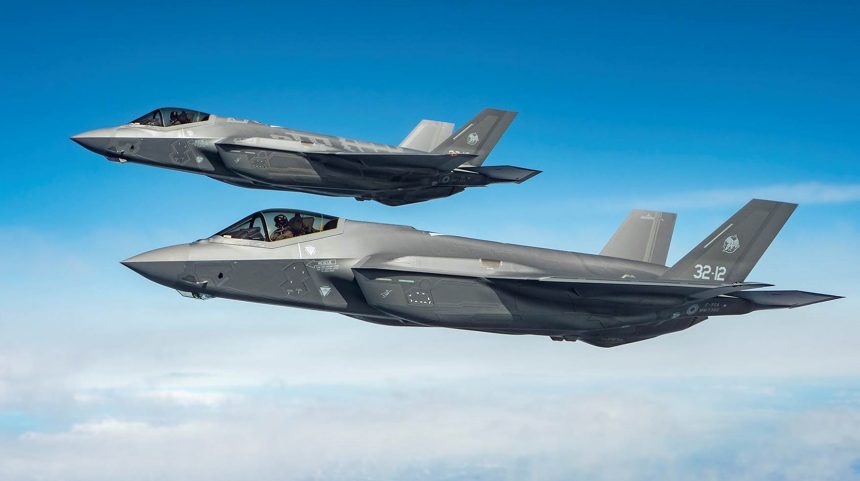The Italian F-35s deployed to Keflavik, Iceland, were among the NATO interceptors scrambled to monitor the Russian activity in northern Europe.
On Jul. 3, 2020, three Northern Fleet Tu-142 aircraft flew a 12-hour mission across the Barents and Norwegian Sea, and over the northeastern Atlantic Ocean. The 7,000 km trip was supported by at least one Russian Air Force Il-78 tanker aircraft, that refueled the Tu-142 Bear F/J along the way, and by an unspecified number of MiG-31 interceptors that provided fighter escort to the ASW and maritime patrol aircraft. NATO has confirmed us that MiG-31, Tu-142 Bear F, Tu-142 Bear J and Il-78 were the Russian assets involved in the mission.
Several NATO aircraft were scrambled to intercept or monitor the Russian Naval Aviation activity. Among them, the Italian Air Force F-35A jets currently deployed to Iceland, for Operation Northern Lighting II, their second tour of duty in support of NATO’s Icelandic Air Policing mission. According to NATO, the Italian 5th generation aircraft, belonging to th Task Group “Falco” of the Task Force Air 32nd Wing, in QRA (Quick Reaction Alert) at Keflavik, were scrambled to intercept the Russian aircraft on their way to their operating area south of Iceland. The A-Scramble (Alert-Scramble), marked the first time an F-35A of any partner nation was scrambled under NATO command for a real-world mission from Iceland.
A second pair of F-35A jets was then scrambled to establish a CAP (Combat Air Patrol) and monitor the activity of the Russian ASW aircraft on their way back.
Interestingly, a similar activity of Russian Tu-142s was also recorded on Mar. 7, 2020. Back then, the NATO fighters intercepted both Tu-142MK (Bear F) and one Tu-142MR variant (Bear J) that was escorted by at least one MiG-31 Foxhound. While the Tu-142MK is designed to perform ASW and its goal is to search and destroy submarines in distant patrol areas, the Tu-142MR “Bear J” is a VLF band radio communications relay platform whose mission is similar in concept to the one of US E-6A TACAMO: it provides a communications relay capability to submerged SSBNs, SSGNs and SSNs. The Bear J is based on the Bear F airframe but has a ventral fairing containing the VLF antenna cable reel and unique nose radome and antenna on the vertical tail. NATO
The two types of Tu-142s often team up during long-range training missions carried out along the borders of NATO’s airspace.
Dealing with Iceland, as already explained in several article here at The Aviationist, on a rotational basis, three times a year, allied nations contribute, for three or four weeks, to the Interim Air Policing in Iceland, a country that does not have autonomous air defence assets and capabilities but is strategically located close to the Arctic. For the sixth time in total since 2013 and the second with the F-35 in less than one year (read our full report about the first deployment here) the Italian Air Force is securing the skies over Iceland, supporting NATO’s Airborne Surveillance and Interception Capabilities to meet Iceland’s Peacetime Preparedness Needs (ASIC IPPN) mission. The purpose of the NATO mission, initiated in 2008, after the withdrawal of US forces from the island, is to provide air surveillance and interception coverage over Iceland, in order to maintain the integrity of the NATO airspace.

Here are some details about the F-35’s QRA I provided in an article published after visiting the Italian detachment in Keflavik. They still apply:
The Italian F-35s carry out the QRA service in Iceland with the same configuration used to support the domestic SSSA (Servizio Sorveglianza Spazio Aereo – Air Space Surveillance Service) on a rotational basis, where the SCL (Standard Conventional Load) includes two AIM-120C5 AMRAAM (Advanced Medium Range Air-to-Air Missile) missiles in the internal weapons bay.
One may wonder why the F-35, that is not a “pure” interceptor, is committed to such an air defense mission. Well, the reason is quite simple: deploying the 5th gen. stealth aircraft under NATO command allows the service (in this case, the Italian Air Force) to test the asset as part of a different chain of command, with different procedures, on a different base, and in different (sometimes adverse/austere) weather conditions. The peacetime air policing mission requires the aircraft in QRA to scramble with live air-to-air missiles when there is the need to intercept, identify and escort, aircraft approaching or “skirting” NATO Ally’s sovereign airspace: a task that an F-35 is more than able to conduct. Moreover, the deployment on a NATO mission is one of the milestones the Italian Air Force has set along the path to achieve the type’s FOC ( BTW, it’s worth remembering that, first in Europe, the Italians declared the F-35’s IOC on Nov. 30, 2018).

One last remark: the one on Jul. 3, 2020 is also the first ever A-Scramble for the Italian Air Force F-35A Lightning II fleet.









